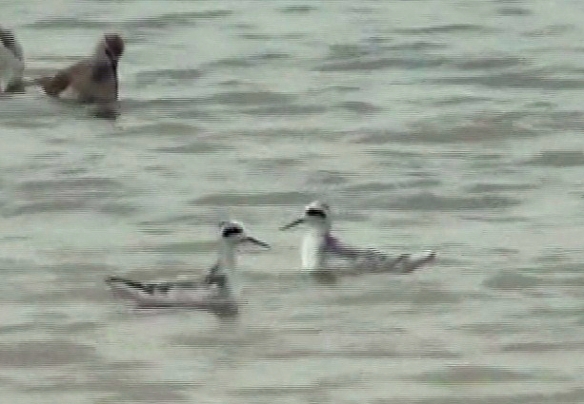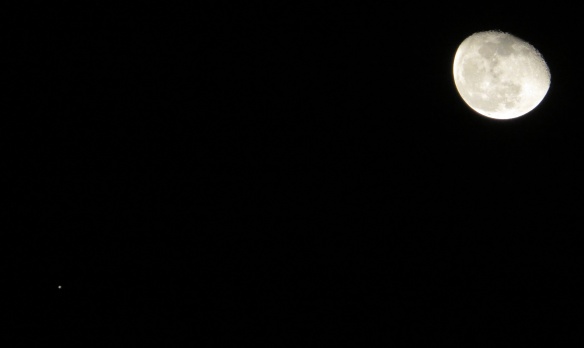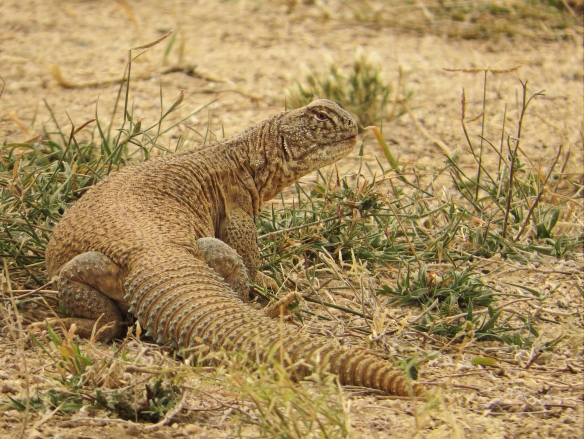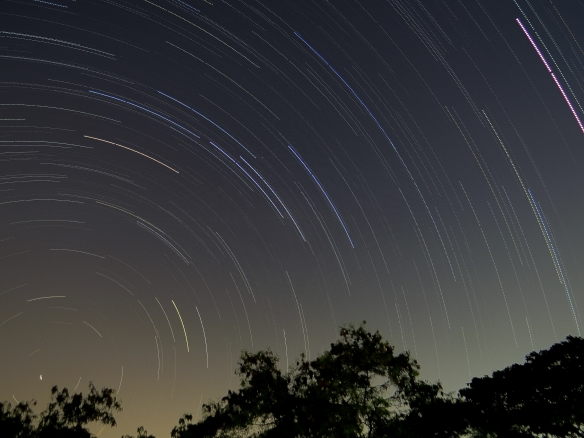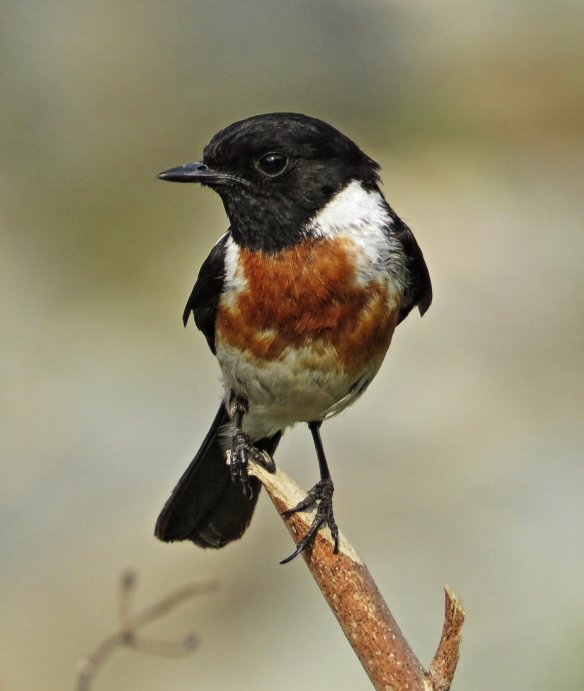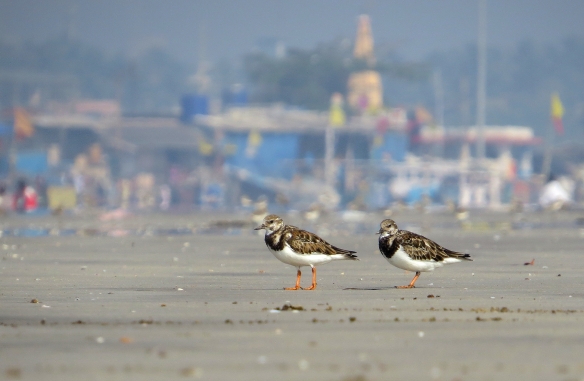The Big Birding Day Out (Bird Race 2013- Pune Chapter)

Steppe Eagle
Feb 10th, 2013. Almost a year now since the day I started birding. And what an exciting year it has been for me. I have learnt so much about nature and the beautiful world around us. I’ve met so many incredible people, all of them as inspiring with their works in environment and wildlife conservation and protection, learning through their experiences as well doing some absolutely brilliant photography. Getting to know so much has made me realize how I had been like an alien in my own world. This added knowledge of the flora and fauna around me has helped me be more alert, active, sensitive and respectful of the natural environment that we live in. This exposure to the new world makes me want to be more proactive and get more and more people involved into appreciating and conserving nature and the environment surrounding us. This new journey is taking me places I wouldn’t have dreamt about going and is surely like a Train that I’m glad I didn’t miss.
It is February and I wake up at four in the morning to the call of my nocturnal friend, the Barn Owl. This day was surely going to be special to me, why? It was about a year ago when I came to know about the Bird Race. Today, I was going to be a part of the 7th HSBC Bird Race in Pune thanks to Foliage Outdoors and HSBC. It was going to be my first bird race and the excitement to be a part of it was overwhelming, now I had mentioned about the bird race initially so I guess you have a fair idea of what it is. But I’ll tell you that, though it is called a race, at the end of the day the motive is to introduce more and more people to this wonderful activity who as a result would end up being responsible and active bird watchers and environment friendly individuals. The registrations had started two months prior and we were already into deciding team members and teams names. Every team had to have 4 members out of which one member should have good knowledge about the region’s habitats and related fauna, that member in my team was Ashish Peshave. I was made team captain by my good friends Ashish, Pratik and Leenata, the latter two being the final members of our team. Every team had to have a team-name of a bird, resident or migrant, found in the Indian Sub Continent. So after considering the entire list of bird species in the sub continent we finalized the ‘Great Knot’ as the team name. So there it is, we were the Great Knots, one of the 24 teams competing in the Pune chapter of India Bird Races 2013. Finally every team had been given a log book of different species found in the region and at the end of the race, the time given for which was 5.30 pm, we had to submit the duly completed log book at a common meeting point for the teams which was a place called Spice garden near MIT college in Pune.

Barn Owl
So then, I woke up, said good morning to my Barn Owl buddy and started to get ready for the day. It was not possible for everyone to meet up at a common place, and I had volunteered to provide the means of travel (the most popular family car, maruti 800 😀) so Pratik decided to meet me at my place in the morning as I didn’t know how to drive. We took the car and left around 5.20am. Now, we had decided to explore different habitats again as it would ensure sightings of a good number of interesting bird species. We decided to start off at a popular birding destination in Pune, Sinhagad valley. On the way to the valley we picked up Leenata near Saraus Baug and Ashish near Rajaram Bridge and the Knots were all set and ready to rock!
We reached the valley around 6.30 in the morning. We parked our vehicle near a tea stall close to the valley, equipped ourselves with our wits, hawk eye vision, binoculars and cameras and set off to explore the valley. We observed that there were a lot of people over there that day, maybe because of the bird race, but also because it was a holiday, you really don’t get to see a lot of birds in places where there is a lot of human activity and that is where I believe the valley is slowly and unfortunately losing its shine. But we still had high hopes no matter the circumstances. There is a steep upward slope that takes you to the valley as well as Sinhgad Fort, we took this route and entered the valley and the first bird spotted inside the valley was the White-throated Kingfisher, I say inside the valley because yes we had seen most of the common birds on our way to the valley itself. The second sighting within moments of the first was the Crested Hawk Eagle.
In the valley there is a place that can be referred to as a bird photography studio, a pond were most of the enthusiastic photographers sit around. Birds are known to come over here and drink water or have a bath in the morning. We decided to move forward and explore that area later. Moving on, we came across an enthusiastic family of bird watchers. A father, who was trying to look like veteran wanderer in the wild army general with tons of knowledge on the region’s flora and fauna, standing in a wishram (standing at ease) position with his chest puffed up, his child who was just curious about the movement he was noticing in the trees around him and his wife who just looked dazed and confused but still pretty jolly and enjoying the morning activity. Uncle army general quickly pointed out a Coppersmith Barbet to his family and was talking about it in a very proud manner; his boy looked very impressed with his father! I hope the family spotted the Crested Hawk Eagle perched on an open branch on a tree just a few yards away from where they were, it would have made their day.
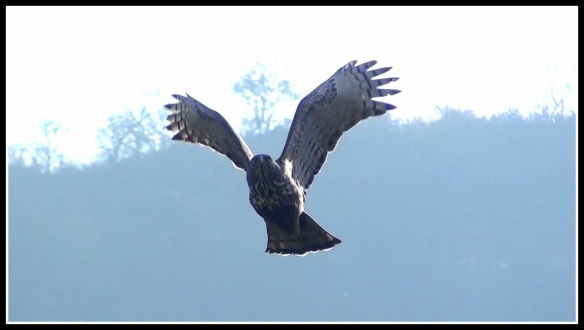
Crested Hawk Eagle
Moving on and as expected we observed quite a few resident as well as migratory birds most of them passerines. These included warblers, babblers, minivets, flycatchers, shrikes then parakeets, barbets, bulbuls, starlings and drongos. We explored every area possible observing and taking note of the different bird species we saw. While exploring the valley we also came across a few friends who had also participated in the bird race. Sharing pleasantries with them we moved on again. It was around 8.30 when we decided to move out and explore other areas listed on our route map for the day. Moving out of the valley we came across the famous pond again. Not surprisingly the area was filled with birds and bird watchers young and old simply delighted by the variety of sightings. A Paradise Flycatcher caught their eyes and a few young birders got over enthusiastic at this point started sharing their excitement very loudly, not an ideal characteristic for a bird watcher. I don’t blame them for the way they reacted, they’ll learn as they grow, I hope. In this area we also came across probably the sighting of the valley visit, a Verditor Flycatcher pair. We observed the pair, took a few pictures and moved on
. Coming out of the valley we already had a healthy number of species spotted. It was a good start for the day. We had breakfast at the tea stall near which our car was parked. We ate as we decided the route to take for our next destination. Next up it was Dive Ghat with a visit to Khadakwasla on the way. Full of energy after a nice morning breakfast we put on the seat belts and were off to Khadakwasla, it took us about ten minutes to observe the exact number of bird species in the back waters of Khadakwasla. We observed Common Pochards, Ruddy Shelducks, Spot-billed Ducks, Common Coots, Tufted Ducks, Gargany, Gadwall, Little Cormorant, Indian Cormorant and a River Tern. We didn’t wait at Khadakwasla because we knew that it was going to be a long day and we needed to get moving as to be able to cover every destination on our route map for the day.
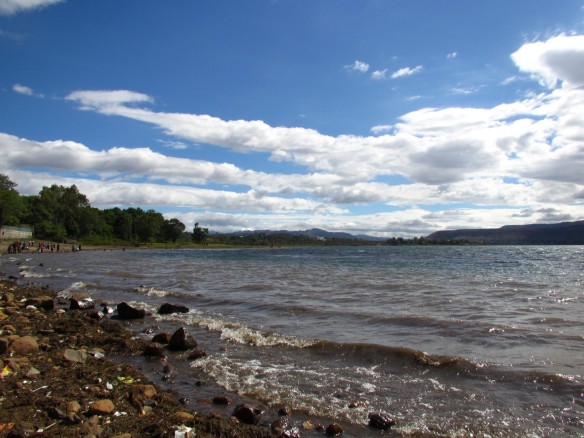
Khadakwasla Backwaters
Next up it was Dive Ghat. According to the habitats we were going to cover, the forest habitat had been seemingly covered in the valley and part one of the wet land areas had been covered in Khadakwasla. We would encounter two more wetland areas eventually in the day. Dive Ghat was mostly a dry scrub and grassland area. The kind of the habitat all across Dive Ghat is one which looks dry and lifeless for the casual passerby but it is one which supports a wide variety of mammals and birds. A vast majority of the scrubland and raptor species were spotted by us in this area itself. The area has abundant farm fields and a good human population. There are farms and fields along with dry scrub areas surrounded by mountains and trees, typical countryside. Dive Ghat thus since ages has been a popular haven for a variety of raptors like the Steppe Eagle, Tawny Eagle, Black Kites, Bonelli’s Eagles, Harriers, Falcons, Kestrels, Short-Toed Snake Eagles but it is sad that the majority of the major predators in that list might also be slowly turning scavenger. Maybe one reason for it is that due to human existence in the area there is a lot of waste dumped out in the open and sometimes it can be easy as free meals for the raptors to come enjoy, we can call this adaptation to the changing environment, it is maybe good as long as the species are not threatened by the people, food poisoning and other factors and that their numbers keep steadily increasing, but hopefully it does not drive out the predatory instinct from these birds. That maybe actually impossible because nature has its own ways to balance things out so maybe we shouldn’t worry about the change in the feeding habits
. The other reason for the wide variety of the raptors found here is the habitat is home to a range of insects, reptiles and mammals. There are always worms, flying insects, snakes and lizards, small and medium sized mammals everywhere. So there is abundance of food but yes it is not easily available or takes an effort by the bird to spot and capture. Whatever may be the reason, it is certain that if you visit Dive ghat for raptors, you won’t be disappointed. Dive Ghat is also popular for the existence of a variety of scrub and grassland species. The birds that prefer this kind of a habitat usually stay very close to the ground mostly preferring foraging all day in search of small insects and seeds. You rarely find these species in flight or perched on a tree. The highest possibility is to see them either on the ground or perched on rocks and small bushes. The species I’d like to highlight again is the Indian Courser. We were disappointed when a few days ago we went to Veer and couldn’t find a Courser there. We had high hopes for Dive Ghat, Saswad and Bhuleshwar areas and they didn’t disappoint.
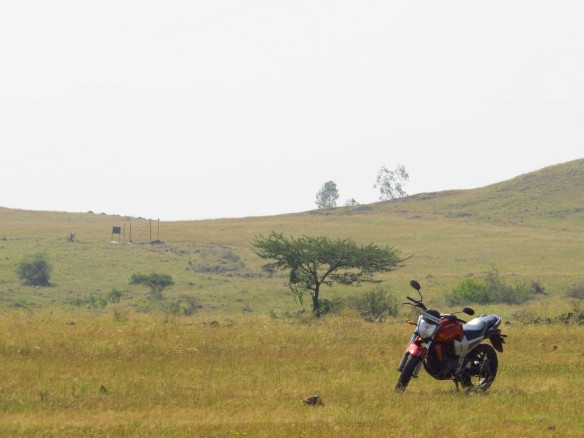
A glimpse of grass and dry scrub habitats around Dive ghat
We entered an area along the highway, an area which looked secluded, perfect for birds, but wait, this was private property and we were trespassing, anything for the birds! As we started moving ahead the birds started popping up as if the ground was an oven and the birds were pop corn! My god that was a hilariously stupid comparison! 😛 Anyways we moved on, spotted different species, observed and kept note so as to be checked in our log books later. Further ahead we spotted a few birds circling in an area near the mountainside. On further inspection with the binoculars we were able to conclude that those were Bonelli’s Eagles. The size, coloration and shape looked perfect for this resident raptor and we always had the expert opinion of Ashish as well. This sighting motivated us to move forward and inspect the entire area. Moving along we came across a small lake. I was surprised when Ashish said that a good number of Northern Pintails have been spotted in the area for the last few years. We stopped by and inspected the lake area. We saw Ruddy Shelducks, Spotbilled Ducks, Red Naped Ibises and surprise surprise! There were Northern Pintails as well. It was a delight to watch these birds in an area which I’d term as a semi-desert habitat but I was happy to know that such a small water body was also good enough to support these long distance migrants
. We moved ahead scanned the entire area and were happy with the number of scrubland species, water birds and raptors we had seen. It was a bumpy ride, the road more suitable for an SUV as all the way along this area I felt like we were competing in a cross country rally but our little family car didn’t disappoint. At this point we were feeling a little worn out and we felt that it was time to take a small break and have lunch. We decided to move along to the highway and find a place to take a break and recover. We were on our way out of this private property now and we came across a local on a bicycle as we had again stopped observing an Indian Bushlark which we had also seen at the time we entered this area. This guy was supposedly the guard the property owner had kept to keep trespassers like us away. As soon as he saw us he stopped, gave us a stare and tried intimidating us with local slang but we knew that we were not supposed to be there so we just told him not to worry, we had come here to see birds and we’re leaving. That matter ended then and there and we moved out. But you see it never gets over so easily does it? A few meters away from the intersection which connects the road to the highway we observed a lot of bird activity near a huge radio tower. We got closer and in moments they were everywhere! They? By ‘they’ I meant, two Tawny Eagles, quite a few Steppe Eagles and a lot of black kites. It was delightful indeed to watch these birds as there were moments when they were hovering right above us and very close indeed. The reason why this was large number of predators on display was that one of the birds had apparently caught something and all of the raptors in attendance wanted a piece of whatever was caught. You just have to imagine what the scene here must be like. To describe this in words of my friend Ashish it was an Aquila Battle ground! Another moment for the day! One more exciting experience to share!

Steppe Eagle, Photo Credits- Ashish Peshave
Moments later we were driving along the countryside talking about the best moments of the morning and sharing a laugh here and there. We also kept updating our log book with the number of birds we had spotted and although everyone loves to win, the main motive of participating in the race for us was to enjoy a day out birding with friends. A few minutes after leaving Dive Ghat we came across a place along the road where we spotted a Steppe Eagle riding the warm thermals. Ashish decided to halt at this place for a few minutes so that we could admire the Aquila for some time and take a few pictures as well. Me, Pratik and Leenata kept observing the handsome Steppe against the bright blue sky when eventually Ashish sir showed us why he had been chosen to guide the team as the most experienced birder, he had spotted another steppe eagle on a hill about two football fields away from us. He pointed his finger in the direction where he had spotted the bird and asked us if we could spot it as well. We scanned the area with our binoculars for about ten minutes and finally gave up. Then Ashish pointed towards a tiny black figure near the cliff on the hill and there it was, another mighty Steppe eagle perched on the cliff as if like a king on his throne scanning his territory. We were amazed as to how Ashish was able to spot a bird so far off; he said that it comes with experience, patience and spending time in the field. With those words of wisdom etched in our minds we moved along our route which would lead us through the State Highways near the Saswad area and through Bhuleshwar, eventually to another wetland habitat Kavdi and finally to Spice Garden in the evening where all teams were supposed to gather for the concluding part of the day’s event.
If you ask the veterans, the conservationists who are used to spending time out in the field with a motive of finding something rare and illusive, you’ll come to know that a wide variety of mammals can also be spotted in Pune’s outskirts. I knew that leopards had been spotted in places around Pune, there always used to be stories of leopard sightings or attacks in newspapers, some incidences ending well with the animal being tranquilized, captured and released back in the wild while others sadly ending with the poor animal getting killed. I had also seen Langurs, Macaques, Snakes, Elephants, Camels and Bears in Pune when I was a child; unfortunately most of them were captive animals used by the underprivileged to be able to earn a living. That was in the 90’s; I don’t think you’d get to see something like that today, or maybe you just might. You do get to see Chinkaras, Spotted Deer, Wolves, Jackals, Foxes, Hyenas in some parts around Pune District. We spotted Chinkaras at three different locations on our way to Kavdi. We took a halt at one of these locations and decided to finally pay attention to our screaming hungry bellies which we had conveniently managed to ignore for so long thanks to all the excitement of the day’s activity. This was a textbook scrubland habitat and there were at least six Chinkara specimens that we observed in this place, but of course these shy creatures weren’t going to stay there the entire day, we enjoyed observing them while we could. We had our meal as we looked back at the highlights of the day so far trying to recollect the exact number of bird species that we had seen. This was the place we were also greeted by a very bold Indian Roller, I say bold because this individual was arm’s length away from us but didn’t budge and yes this is where yet again Ashish’s expert eyes or should I say Mr. Hawk Eyes spotted a Montagu’s Harrier for us. A lifer for me 😀
We got moving and kept scanning the countryside driving along the state highways. We already had what can be called an exceptionally good outing but we were so in for some more! For the next few minutes we just kept moving ahead as we came across more common bird species we had already seen in the day. And then just before reaching the road that connects to Bhuleshwar Temple, Ashish asked Pratik to stop the car. He asked for the binoculars and pointed them towards an area on the left of the road, a dry patch with ploughed fields on both sides, which to us looked like scrub, mud, soil and simply earth. And then Ashish spoke those golden words that made my day, I don’t exactly remember the exact words that he used to construct that splendid sentence; it sounded something like “Blah blah blah blah blah INDIAN COURSER”. No disrespect to my pal, I really don’t remember the sentence 😛 but the words Indian Courser, truly made my day! 🙂

Indian Courser. Credits: Ashish Peshave
So the first word that comes to your mind when you finally manage to spot the bird after much scanning is ‘beautiful’ and then the next two words- ‘incredible camouflage’. These are primarily brown coloured birds with an orange tinge but only nature knows how to make something that resembles the colour of dirt look magnificent! And that should explain the camouflage effect too. There were three individuals and we observed them for quite some time. Ashish managed to click amazing photos of the birds. I took a video and then just kept admiring the birds until we decided to move on. I had mentioned in the previous ‘angles in disguise’ post about how we kept looking for the coursers but had failed at that time, finally managing to get glimpses of this amazing bird was truly a moment to savour for a lifetime. I had also mention in the previous post that I’ll be writing something about environment protection and wildlife conservation. Those are big words and I am no authority to write about conservation and all but if all of us follow simple rules to reduce, re-use and recycle, go green, respect nature and not be greedy, our future generations might not have to wear oxygen masks and go to natural history museums to understand the meaning of and view specimens of ‘flora and fauna’ of the days gone by. It is high time we realized that the planet really does not need us; it is actually the other way round. I imagine everyone doing the Homer Simpson ‘Doh’ after reading this 😀  Next stop was Kavdi, the final destination on our list of places to explore and a wetland habitat. We reached the place around 4.15 pm so yes there was no time to wait. Just spot the birds and rush out was the motto if we wanted to make it to the final checkpoint on time at 5.30 pm. We took a quick walk around and spotted around twenty different bird species then and there, a majority of them were ducks and waders, others being warblers, wagtails, chats, munias, flycatchers, terns and a lone Marsh Harrier. We got back into our car and started rushing towards the chequered flag at Spice Garden near Paud Road in Pune. We spotted an Indian Grey Hornbill on the way just outside Kavdi and that was the final bird spotted on the day. So now we started reviewing the events of the day and started filling the log book making the final checklist. We reached Spice Garden at around 5.20 pm and submitted our log book with the final list. We were immediately asked what our final tally for the day was. It was a respectable 137 birds spotted on the day. We were all very happy with the tally and with the effort we had put in and it had turned out to be an incredible outing after all.
Next stop was Kavdi, the final destination on our list of places to explore and a wetland habitat. We reached the place around 4.15 pm so yes there was no time to wait. Just spot the birds and rush out was the motto if we wanted to make it to the final checkpoint on time at 5.30 pm. We took a quick walk around and spotted around twenty different bird species then and there, a majority of them were ducks and waders, others being warblers, wagtails, chats, munias, flycatchers, terns and a lone Marsh Harrier. We got back into our car and started rushing towards the chequered flag at Spice Garden near Paud Road in Pune. We spotted an Indian Grey Hornbill on the way just outside Kavdi and that was the final bird spotted on the day. So now we started reviewing the events of the day and started filling the log book making the final checklist. We reached Spice Garden at around 5.20 pm and submitted our log book with the final list. We were immediately asked what our final tally for the day was. It was a respectable 137 birds spotted on the day. We were all very happy with the tally and with the effort we had put in and it had turned out to be an incredible outing after all.
The teams had started assembling now and we were waiting for the ending ceremony to commence. Meanwhile we got to meet the organizers, lots of birder friends and got acquainted with new birders from all around Pune. It felt great to see that so many people, young and old, had together participated in this one day event. The ending ceremony started with a few words from the representatives of the organizers Foliage Outdoors and they introduced ornithologists and environmentalists who had come to speak a few words on birding and the event, they were also the judges who would eventually announce the winners. Moments later the teams were asked to come on stage and give an introduction of their respective team and a summary of their day out birding with also the sighting of the day for the team. There were twenty four teams of four and everyone was able to check out the competition and hear about some amazing events and stories of some fantastic encounters as the teams took the stage one after the other. There were people and kids who had gone birding for the first time in their lives and listening to them enthusiastically narrate their most memorable moments of the day was a nice experience. We also found out how amazingly diverse the bird life in and around Pune is and it simply felt wonderful to know about the sheer variety of the flora and fauna that can be discovered if we just decided to step out and explore. With this we were slowly coming towards the moment that everyone was waiting for, the announcement of the winners.
Before the winners were announced it was time to announce the bird of the day which was the ‘Mottled Wood Owl’ and not surprisingly the team that had spotted the owl were announced the winners with a total of 173 birds spotted on the day. My team, the Red Knots were ranked 6th which was not bad at all although we had hoped to be at least among the top five teams. It was a day to remember nonetheless, as we looked back to those moments and memories that we shared together that we’ll treasure forever! 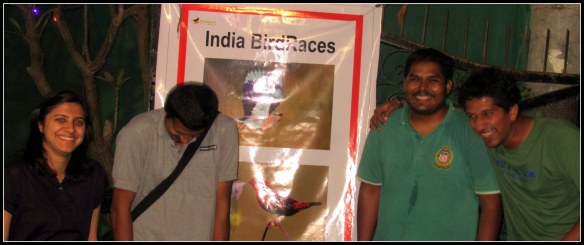 With those words I would like to bring an end to the Angels in Disguise series 🙂 This was the final post of a ten part series in which I made an attempt to describe my first full year as a proper birder starting March 2012 with the spotting and identification of my first Warbler and an Asian Paradise Flycatcher right to participating in my first bird race in Feb 2013. I enjoyed writing every bit of it and I hope everyone had a good time reading my posts.
With those words I would like to bring an end to the Angels in Disguise series 🙂 This was the final post of a ten part series in which I made an attempt to describe my first full year as a proper birder starting March 2012 with the spotting and identification of my first Warbler and an Asian Paradise Flycatcher right to participating in my first bird race in Feb 2013. I enjoyed writing every bit of it and I hope everyone had a good time reading my posts.
This is also my final post of the year 2014 as we say goodbye to what has been quite an eventful year and now we look forward to welcoming the New Year with open arms 🙂
I look forward to seeing you again next year and treat you with loads of new picture stories and posts about my travels from all over India!
Wish you all a very Happy New Year in advance! 🙂
Greetings from…
#OneHappyBirder 🙂
